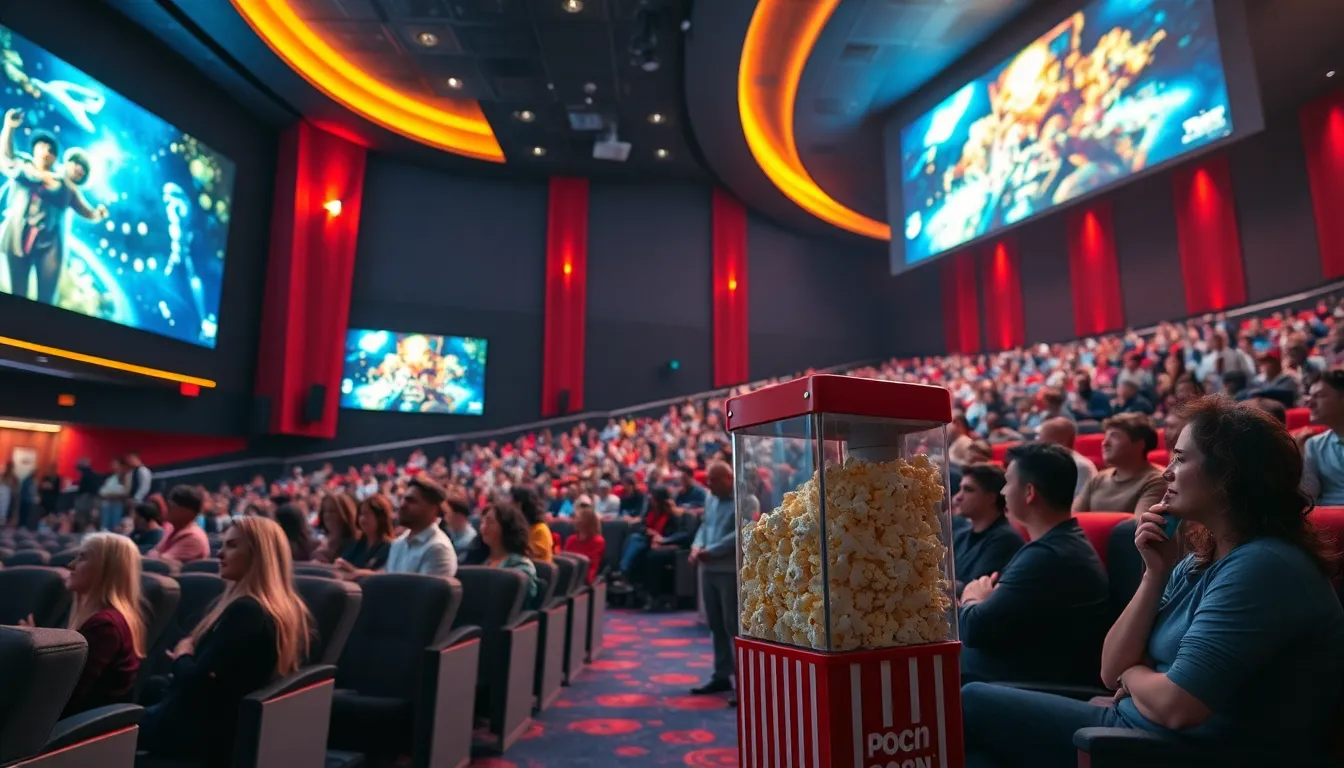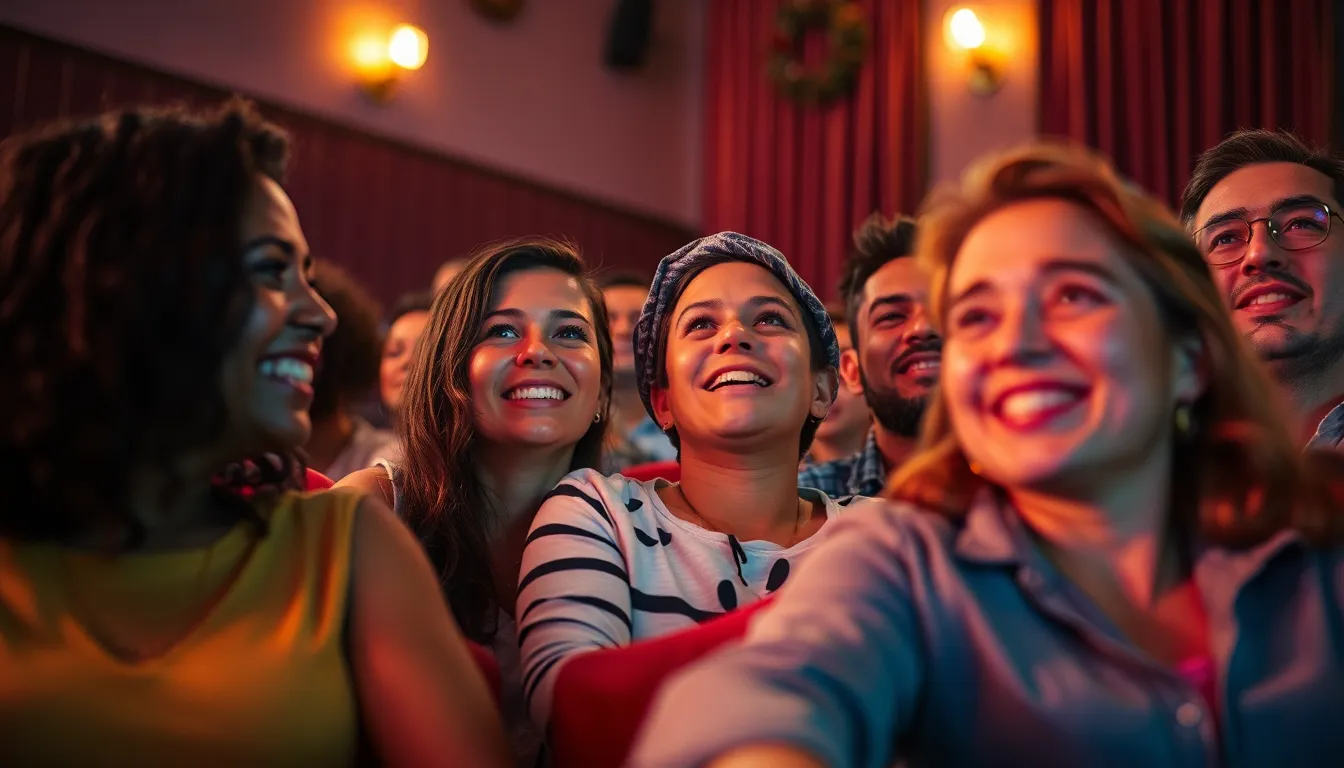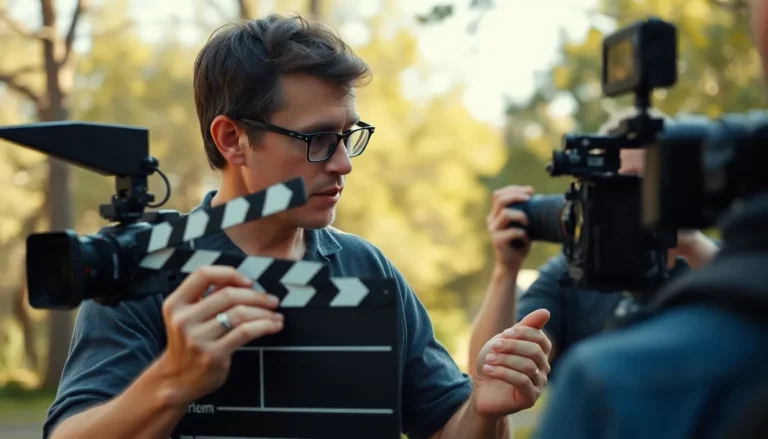Picture this: the lights dim, the popcorn’s popping, and the anticipation in the air is thicker than a plot twist in a thriller. Cinematic experiences aren’t just about watching a movie; they’re about diving headfirst into a world where anything is possible. From heart-pounding action to tear-jerking romance, the magic of film transports viewers to places they never knew they needed to go.
Table of Contents
ToggleUnderstanding Cinematic Experiences
Cinematic experiences engage audiences on multiple levels. Immersion occurs as viewers connect with narratives and visuals.
Definition and Importance
Cinematic experiences involve watching films that elicit emotional responses and foster engagement. These experiences play a crucial role in shaping cultural narratives and reflecting society’s values. Films often spark conversations and promote empathy by exploring diverse viewpoints. Engaging with a story can lead to personal reflections, allowing individuals to see parts of themselves in characters. Understanding this significance provides insights into how cinema influences thought and social dynamics.
Key Elements of Cinematic Experiences
Several key elements define cinematic experiences. Storytelling creates a frame for emotional connections. Visual composition, including cinematography and color, enhances mood and atmosphere. Sound design also plays a vital role; audio elements such as dialogue and music intensify emotional reactions. Editing shapes pacing, impacting audience engagement. Together, these elements craft a holistic viewing experience that transcends simple observation, immersing viewers in the film’s universe.
The Evolution of Cinematic Experiences

Cinematic experiences have transformed significantly over the years. This evolution reflects changes in technology, storytelling, and audience engagement.
From Silent Films to Modern Technology
Silent films marked the beginning of cinematic storytelling, where visuals conveyed emotions. Transitioning to sound in the late 1920s introduced dialogue, enhancing narratives. Technological advancements, such as color film and widescreen formats, further enriched visuals. The introduction of CGI in the 1990s revolutionized special effects, allowing storytellers to create immersive worlds. Current innovations like virtual reality provide audiences with interactive experiences, breaking the boundaries of traditional storytelling.
The Impact of Streaming Services
Streaming services have redefined how audiences consume films. Platforms like Netflix and Hulu facilitate access to a vast array of content anytime, anywhere. This convenience encourages binge-watching and shifts viewer expectations. Original programming from these services disrupts conventional distribution models and fosters diverse narratives. Data shows that audiences increasingly prefer personalized viewing experiences, leading to tailored content recommendations that enhance engagement.
The Role of Sound and Music in Cinematic Experiences
Sound and music significantly shape cinematic experiences, deepening viewer immersion and emotional connection. They create atmosphere, enhance storytelling, and enrich emotional resonance.
Enhancing Emotion through Sound Design
Sound design cultivates mood and tension within scenes, often providing cues that guide audience reactions. By utilizing techniques such as ambient sound and sound effects, filmmakers can evoke specific feelings. For example, a sudden sound can elevate suspense during a thriller film. Conversely, subtle background sounds can create a serene environment in a drama. These auditory elements work cohesively to reinforce visuals, making moments more impactful and memorable.
The Power of Film Scores
Film scores play a crucial role in amplifying emotional narratives. Composed music evokes feelings, underscoring characters’ journeys and pivotal moments. The right score can create a sense of epic grandeur, as heard in action films, or instill deep sorrow in dramatic scenes. Iconic scores from films like “Star Wars” and “The Lion King” leave lasting impressions, becoming synonymous with their narratives. Composers craft melodies that resonate with audiences, ensuring the music remains a vital storytelling tool in cinema.
Audience Engagement and Interaction
Cinematic experiences excel at fostering audience engagement and interaction, enhancing the viewing journey significantly.
Building a Connection with the Audience
Films create emotional bonds by immersing viewers into character arcs and narratives. Diverse storytelling engages various demographics, allowing for personal identification with characters. Relatable themes resonate deeply, prompting audiences to reflect on their own lives. Innovative techniques, such as breaking the fourth wall, actively involve viewers in the story. Additionally, screenings that encourage audience participation, like sing-alongs or Q&As with filmmakers, strengthen the connection, transforming a solitary experience into a shared event.
The Future of Interactive Cinematic Experiences
Future cinematic experiences focus on interactivity and audience involvement, leveraging technology to enhance engagement. Virtual reality and augmented reality offer immersive environments, allowing viewers to explore stories actively. Platforms that integrate social media enable real-time discussions during screenings, cultivating a communal feel. Furthermore, personalized content and viewer choices can influence narrative direction, creating unique experiences for each audience member. These innovations will likely redefine how films are consumed, making engagement a core component of the cinematic experience.
Cinematic experiences continue to evolve and captivate audiences in profound ways. As technology advances and storytelling techniques become more innovative, films increasingly resonate with viewers on emotional and intellectual levels. This dynamic engagement fosters connections that extend beyond the screen, encouraging conversations and promoting empathy among diverse audiences.
The future of cinema promises even more immersive experiences, with interactive elements and personalized content reshaping how stories are told and consumed. As the landscape of film continues to change, the power of cinema to inspire and unite remains a constant, enriching the cultural fabric of society.




